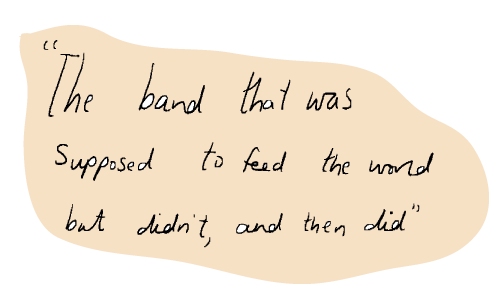
Alma


Romeo & Juliet meets Adam & Eve—reimagined as a cosmic adventure with attitude.
Kane hails from Drop Nine, a bleak asteroid where life is nasty, brutish, and short. Men have survived for centuries by cloning endless copies of themselves, which might explain why things are falling apart. Nobody even remembers what women look like anymore—except for their ever-present “Honey” AI android companions. But the cloning system is glitching, the gene pool is crumbling, and fresh DNA is the hottest commodity in the universe. To make matters worse, mysterious “ALieNZ” (aka “shrieks”) swoop in for abductions whenever they please.
Enter Una: an ace fighter pilot from Luna, a glittering female civilization circling dead Earth. The Lunars consider the men “retroidors”—barbaric, testosterone-addled holdovers from another age—and guard the vast DNA library like it’s the crown jewels. When Kane’s rust-bucket ship collides with Una’s state-of-the-art craft, the two become the first of their kind to face each other in centuries. And neither is impressed.
Trapped together on Kane’s battered vessel, they clash in language, culture, and values. One minute Kane has Una in irons, the next she’s running the show—it’s a cosmic battle of the sexes, with sparks flying in every direction. Think The African Queen meets Star Wars, with sabotage, banter, and more than a few badly timed explosions.
But as they fight and outwit each other, Kane and Una become unlikely allies in a last-ditch attempt to prevent humanity from destroying itself. And while saving the universe, they do the one thing they absolutely shouldn’t: they fall in love.
Their mission fails spectacularly, humanity burns, and the cycle resets. Kane and Una alone survive, crash-landing on a hazy blue planet where everything begins again.

ALieNZ is more than a film—it’s a launchpad for a provocative, expandable storyworld. Two civilizations have evolved apart for centuries:
• Men, divided by endless wars, cloning sons to keep going.
• Women, united in peace, birthing daughters and curating the master DNA library.
Both societies built utopias that, on closer look, are dystopias in disguise—ripe for satire and cultural commentary. From politics and belief systems to architecture, art, and fashion, every corner of this universe offers opportunities for humor, reflection, and bold imagination.
The mythology allows infinite spinoffs: the origin of the “Split,” daily life inside Luna’s glowing megalopolis, the fracturing male colonies, Kane and Una’s multi-generational descendants, even alien interventions in earlier cycles of history.
At its heart, ALieNZ is about cycles—love, war, destruction, and rebirth—told with spectacle, romance, and a sly wink at human nature. A sweeping, cinematic universe designed to spark debate, fuel imagination, and deliver a one-of-a-kind transmedia experience.
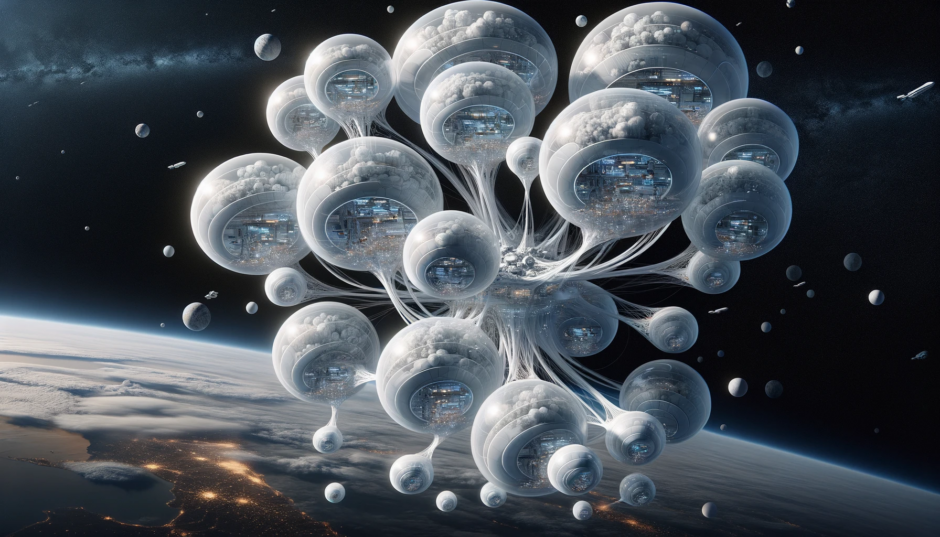

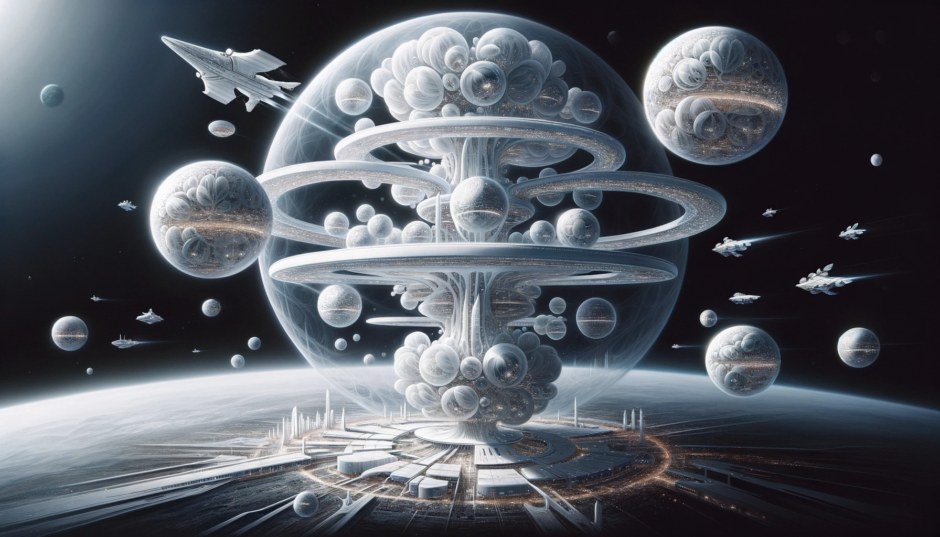



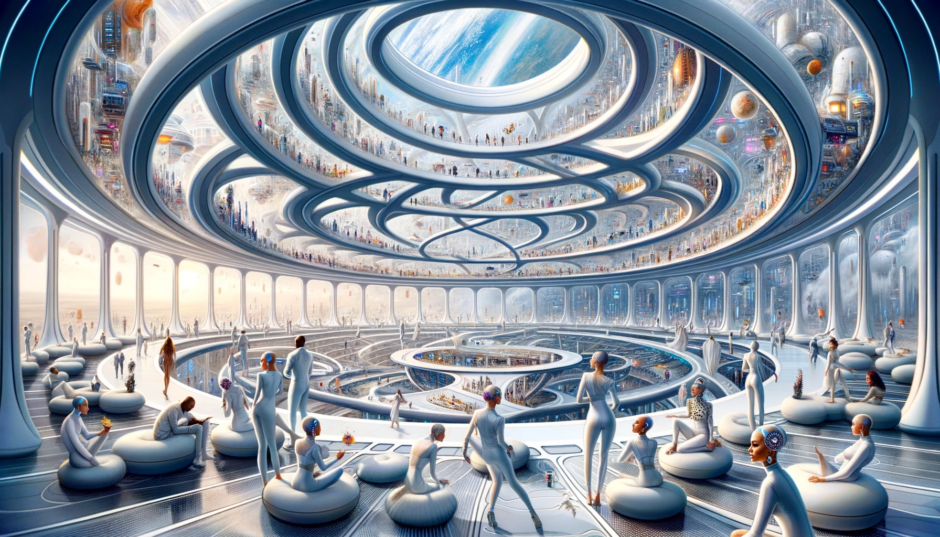



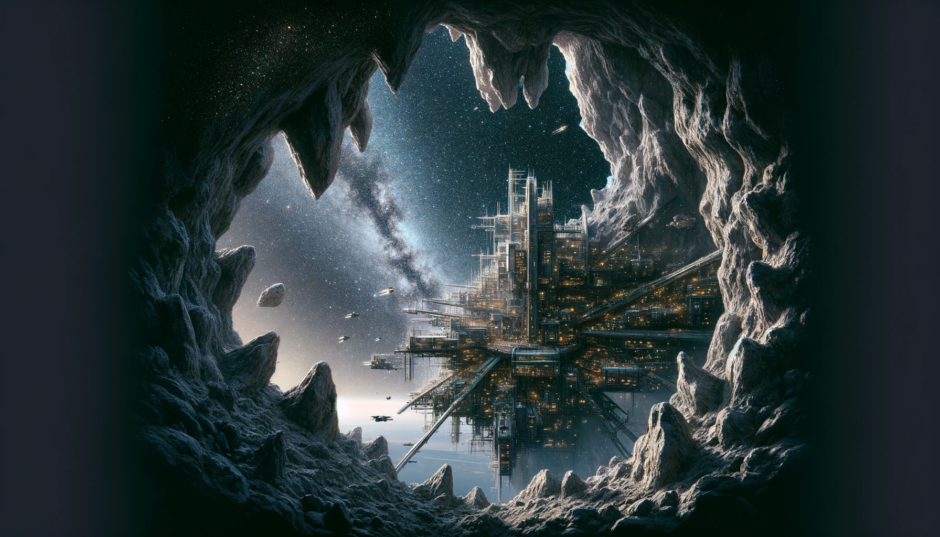
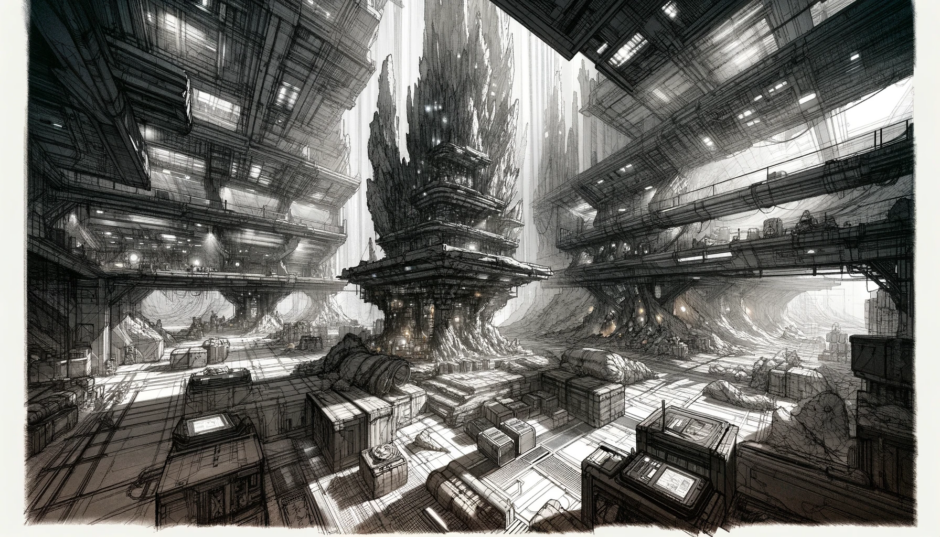

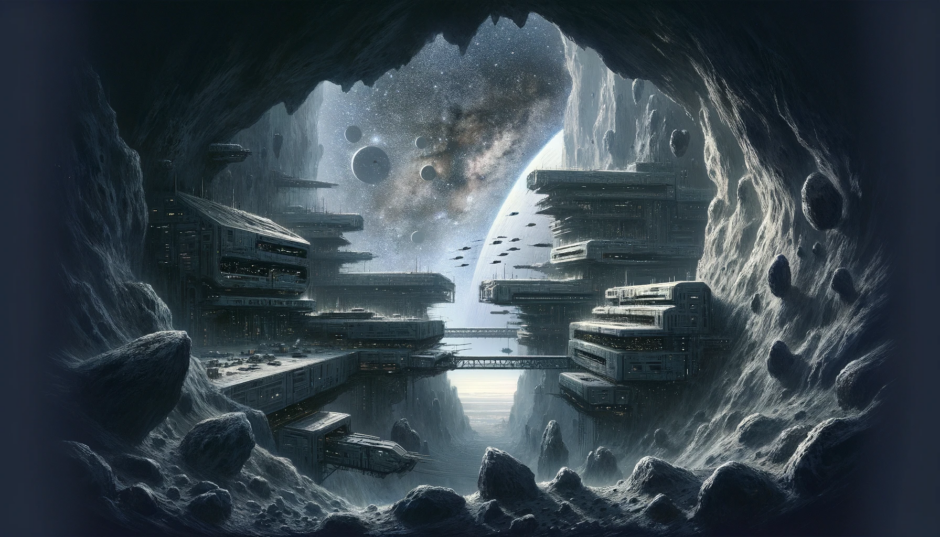
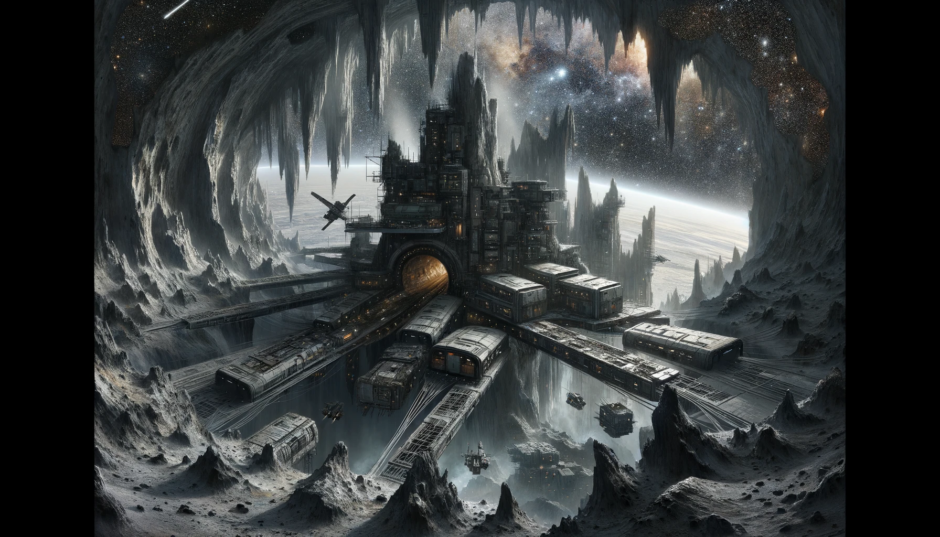
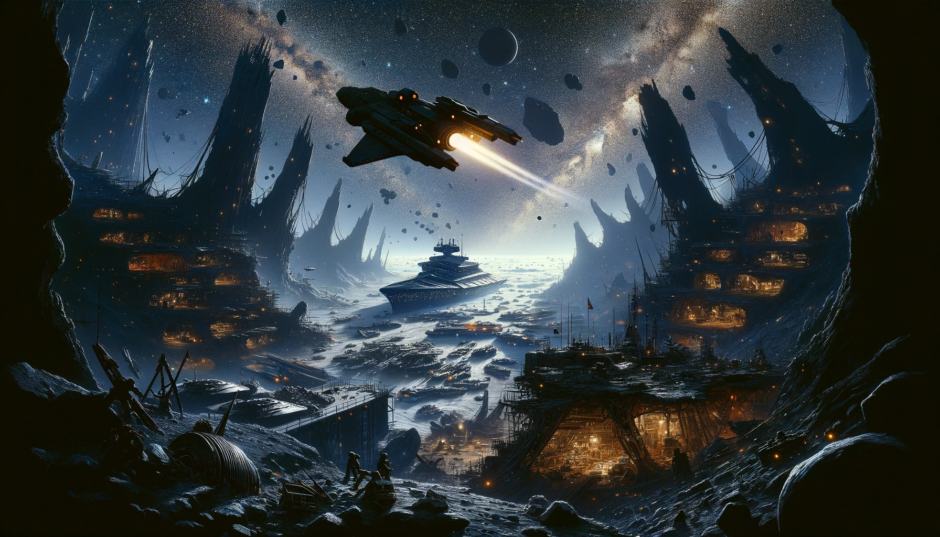
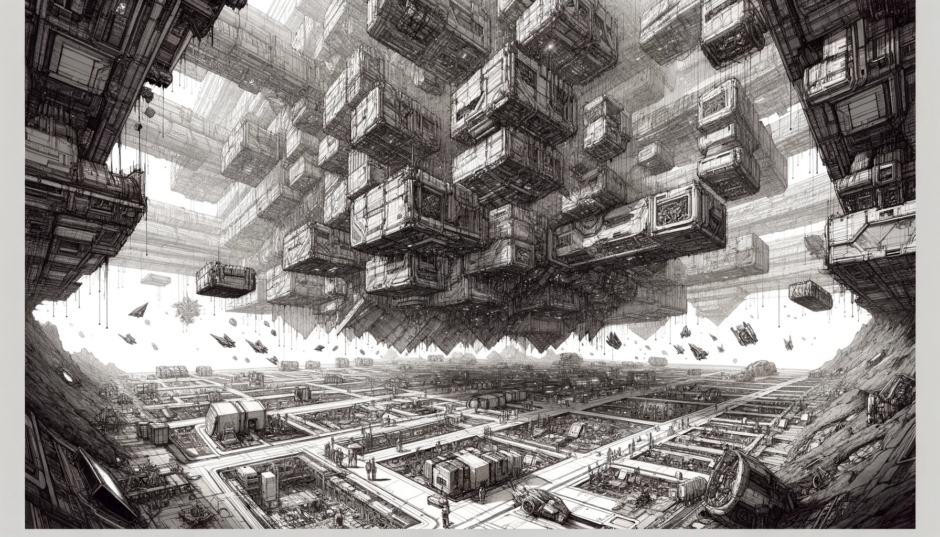
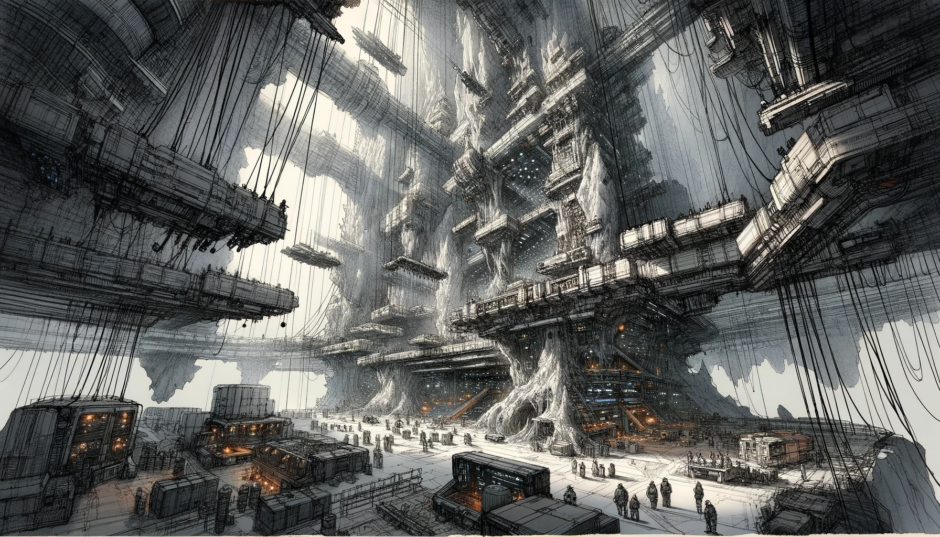
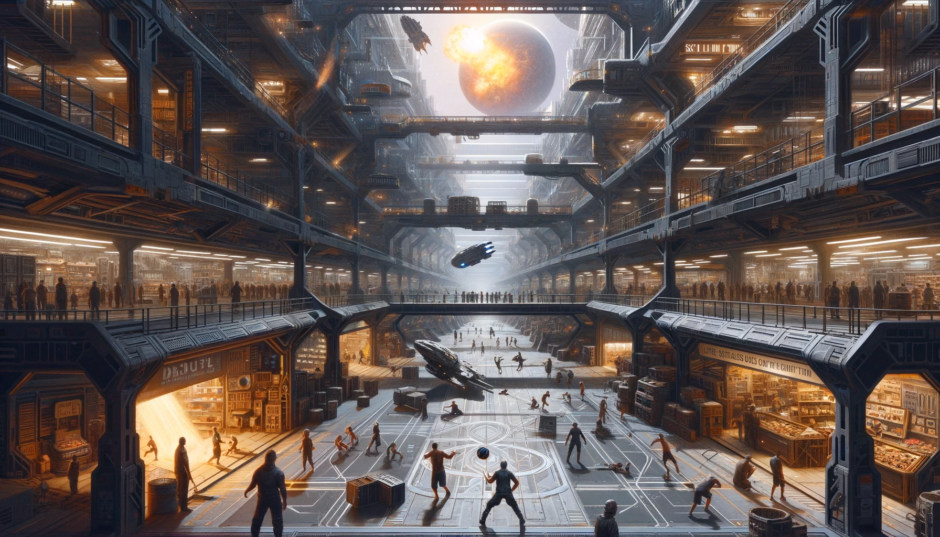
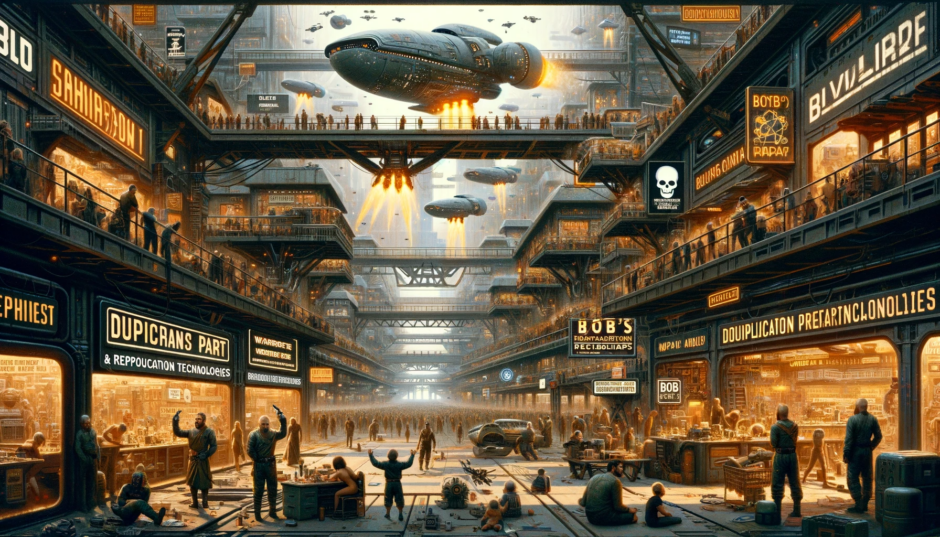
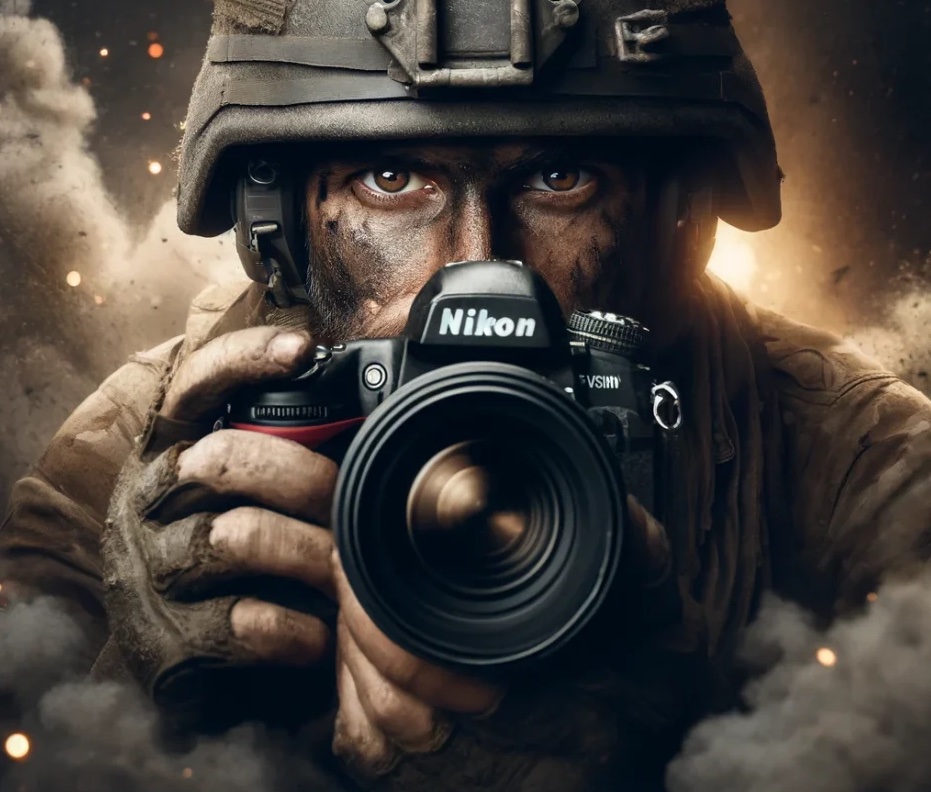
THE LAST VERSE
screenplay
by
Mark Borkowski
story
by
Rafal Zielinski and Mark Borkowski
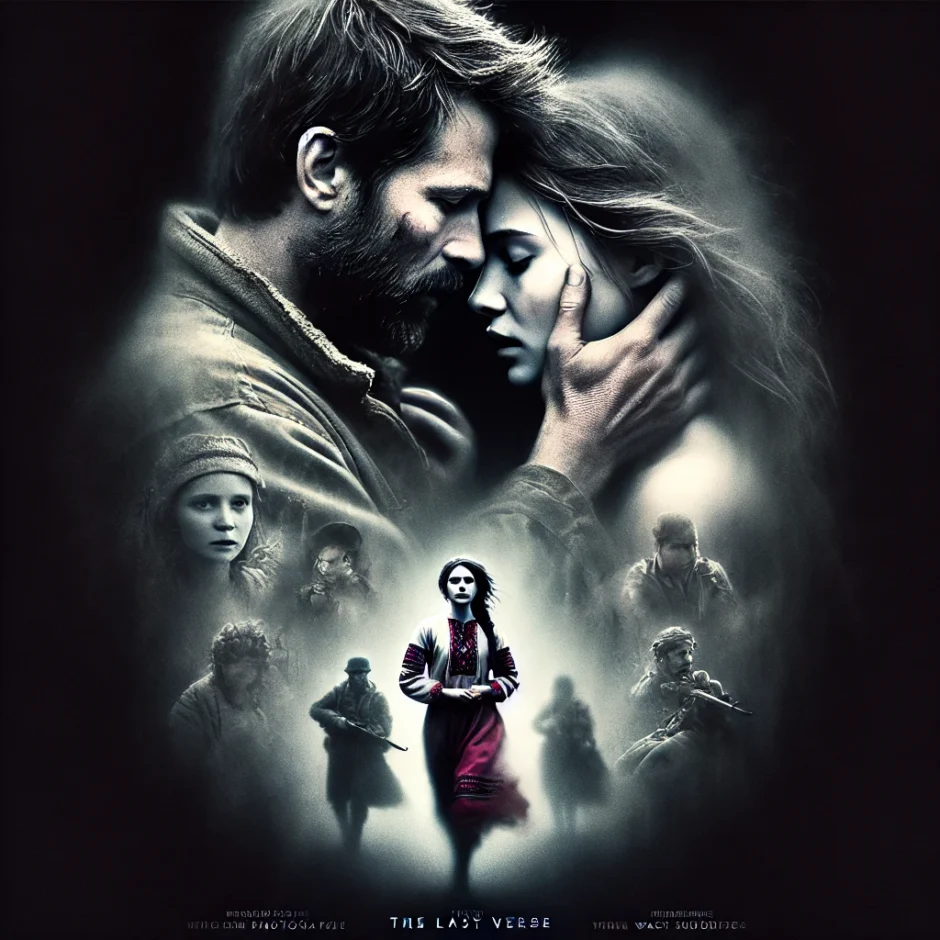
“The Last Verse” is a psycho-spiritual suspense love story. It revolves around Michael Cram, a wartime photographer who, after spending years in war-torn Bosnia, Iraq, Ukraine and Gaza, returns to New York to pawn his work in the city’s art gallery scene. A hard-core alcoholic, Cram is tormented by his war memories, depicted through the haunting and horrific photographs he’s captured.
As he attempts to fit into the New York art world, he soon realizes that nobody wants the horrific “art” photographs he has taken. He looks at the dead and the dying and wonders if he could have saved them. He despises himself for hiding behind a lens when he could’ve prevented so many deaths. Haunted by screams and the tormented faces, especially the children, he drinks himself into oblivion. One night, he hits rock bottom and nearly kills himself.
Cram is dead. But he doesn’t know it.
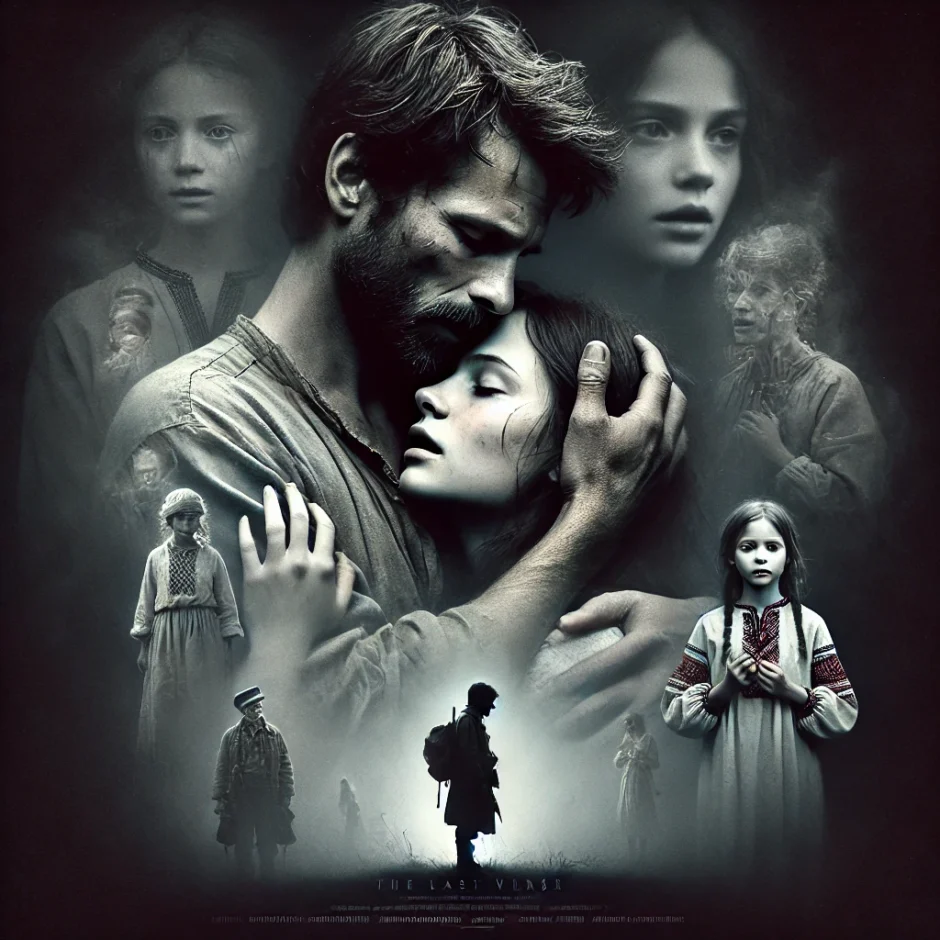
While in his death state, he meets Sunshine; a beautiful but dangerously wild woman. He jumps into her bet up Volkswagon Bug and they go on a wild adventure into the night, taking them into the darkest corners of the city. All the demons in Cram’s imagination materialize and become villains they must escape from. Little does he know its all in his mind.
Cram finds out he is dead. It’s then he understands Sunshine. Her mission was to help him through his dark night of the soul and force him to come to terms with the choices he made in life. The choices that destroyed him as well as others.
Inspired by the spiritual beliefs of what happens after we die, take from various religions and thought systems, and the concept of life-after-death states, this psycho-spiritual suspense takes you through all the stages within the death state that lead to transformation and rebirth.
Copyright @ 2024
All Rights Reserved
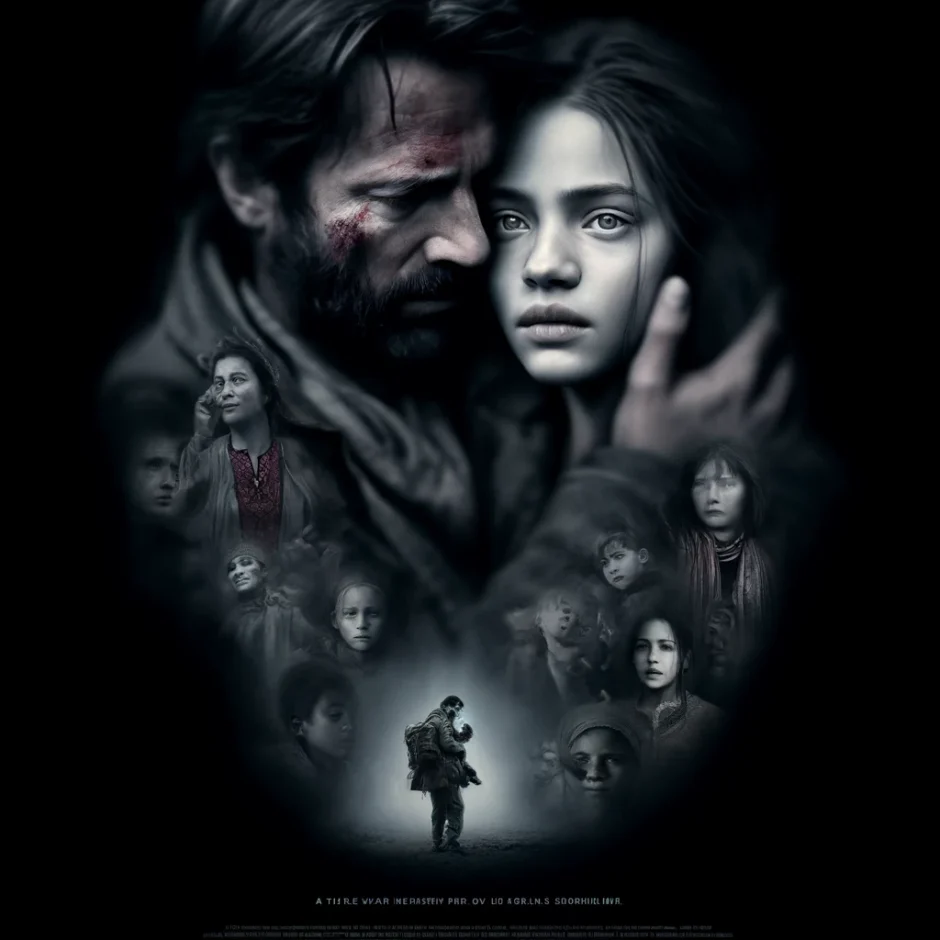
A magical surreal satirical film inspired by true stories, some of them fictional.
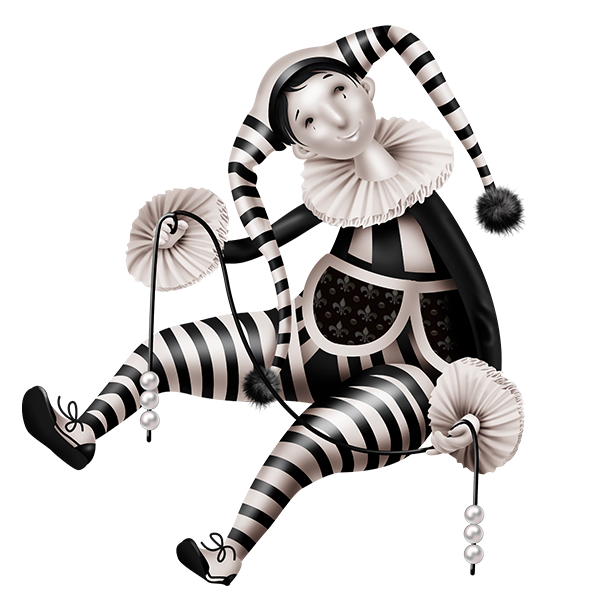
Loosely based on the memoirs of Michael Sinelnikoff (1928-2024), the director of the first Cirque du Soleil show in a small town in northern Quebec in 1984, that put the famed institution on the map. Stories and characters that were largely forgotten, but deserve their appreciation, artistry, and memory.
This is a story that ends at the beginning—the beginning of an entertainment phenomenon that has inspired, scintillated, fascinated and thrilled millions around the world, and continues to do so every day. It ends with the first performance of The Cirque du Soleil.
The Cirque du Soleil has redefined the North American concept of Circus. Through the marriage of superb marketing, circus style, human performance, and theatrical presentation it has launched a new circus art form borrowing from the traditional, but unique unto itself. Yet what we thrill at today in the permanent show in Las Vegas and at the numerous road shows traveling the world had humble and shaky beginnings as do most endeavors that struggle to break new ground and chart new courses.
As happens with many innovative creations, those who were there at the beginning, who breathed life into this young idea, taught it how to walk and guided its first steps, have more or less been forgotten or overlooked in the successes that followed.
Michael Sinelnikoff has been—and is—a dear friend of mine. As a young aspiring Director, I used to watch Michael’s programs on the CBC and wished I were in his shoes. I admired what he did. I envied his skills. I hoped one day to be as good as he was.
He was—and remains—a kind and generous mentor, a man of refinement and good taste, and a truly gentle man.
We reconnected recently and he told me something fascination: that he had directed the first ever production of The Cirque du Soleil and asked me if I thought it would make a good story.
Did I think it would make a good story? I thought it would make a great story!
And as it unfolded, what a story it turned out to be!

Bardo Thodol (Bar-do’i-thos-grol) in Tibetan or more commonly known as “The Tibetan Book, of the Dead”, is a classic of the world’s religious literature.
It concerns the nature of the mind and its projections – beautiful or terrible, peaceful and wrathful – which seem to exist objectively and inhabit the external world.
In particular, it describes these projections as they appear immediately after death, in a much more overwhelming form, since the consciousness is no longer grounded and shielded by its connection with a physical body.
The consciousness is able to relive memories of one’s past life in the most vivid detail – every action, word and thought is stored and can be replayed as if for the first time.
In this ultra expansive, superior intelligence state, one is also able to enter the consciousness of all humans, creatures, nature, the cosmos, macrocosm and microcosm, in all dimensions – especially one’s loved ones, and feel and experience what they are experiencing.
Through recognition of all these – often beautiful, ugly, pleasant, terrifying and seductive forms and memories, it becomes a form of self-judgement.
One can sum up one’s karma, as if through the greatest mathematical algorithm.
It teaches that all of us and the whole universe are all energies, interconnected, and governed by the laws of cause and effects and karma.
Recognizing these as projections, learning through them, leading to a judgement, and the possibility of attainment of the state of enlightenment, and eventual rebirth.
It is about the effects of karma, the the percussions of one’s actions, words and even thoughts.
It is a guide to a successful reincarnation, and one which often leads to reversals, male to female, oppressor to oppressed, and so forth.
One is able to live out in “one’s” future life, what the “other” went through in ones past life – thus challenging many questions, like what is good and evil, what is right, what is wrong and the entire concept of ethics in the larger scheme of things.
Often the same cast of characters are intertwined life after life, giving one the opportunity to resolve karma and the repeating patterns that may last for eons and multiple lifetimes.
This centuries-old scripture was traditionally read aloud to the dying to help them transcend and see death and rebirth as a process that offers the possibility of attaining ultimate liberation, from reincarnation.
Bardo means gap. It is not only the interval of suspension after we die but also suspension in the living situation.
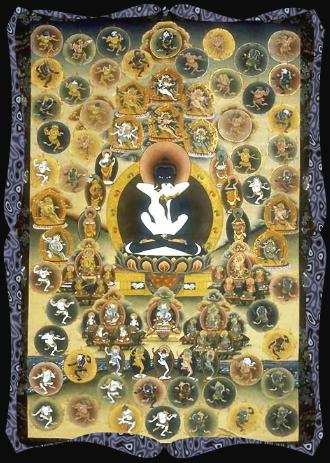
According to the Tibetans, death happens in the living situation as well.
The Bardo experience is part of our basic psychological make-up.
The Bardo experience raises questions about the nature of perception and reality, distortion and fact. By bridging reality, fantasy and memory, it raises the ultimate question: is our reality just a projection?
The book is not only a message for those who are going to die and those who are already dead, but it is also a message for those who are already born: birth and death apply to everybody constantly, at this very moment.
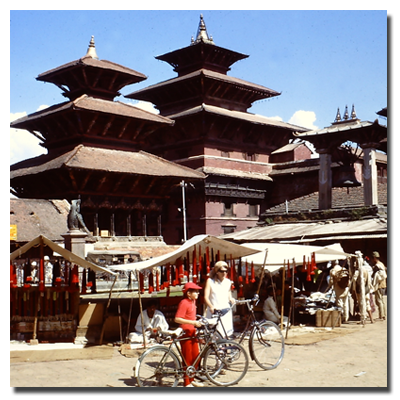
History
I came across this book as a teenager in India when we visited Nepal.
When I was at MIT, studying art, design, and film, I received a grant to turn it into a one-hour immersive three-screen film and I had William Burroughs writing the script and Phillip Glass the music. We got only part of the way as the computers were not up to speed.
When I came to Hollywood, I developed a screenplay (“Bardo”) which was a mainstream film aimed at a wide audience, and also two subsequent low budget indie versions (“Last Verse”, “In a Dark Wood”).
After seeing the recent breakthroughs in VR I embarked on creating a new screenplay – utilizing lessons learned from the previous incarnations of this project and created a new screenplay (a movie with accompanying VR experiences).
The film would be shot in an immersive style, in ultra-high resolution, that could be screened in IMAX or even larger venues (such as the Las Vegas Sphere), followed by traditional formats.

The VR would be a parallel component – a series of moments taken from the story, to be released on the Apple Vision Pro platform.
The screenplay is divided into segments of 12-15 minutes each.
This also offers the opportunity to present it as a limited series on streaming platforms and monetize it as individual pieces of content.
The screenplay is an epic story that was intended to “overwhelm” the mind of the viewer (simulating what the Tibetans describe as the death experience), and in a TV/streaming medium it could be taken more slowly and leisurely, with each segment expanded, so we spend more time with the characters and the situations.
Immersive Large Screen Experience
The Tibetan Book of the Dead describes the Bardo as an overwhelming hallucinatory state, that is multi-dimensional, combining simultaneous levels of time, memory, space and realm.
The audience is often the consciousness of one who has died (subjective POV), but the character can also appear “watching”, so we can also become an objective POV – like watching one’s physical ghost of current age beside one’s image as a baby – even witnessing one’s own birth.
The past and the present reunite and become one. Memories merge and interact with current reality. It is a chance to combine several realities and time frames into a single shot or immersive experience, witnessing moments from one’s life play out all around as we, or the protagonist, interacts with the memories.
The experience is grounded by placing it largely in real settings with real people from the main character’s life – it is more about connecting death to life, reality to memory, rather than visiting otherworldly realms.
Films about death often have fantasy settings (“What Dreams May Come”, “Pretty Bones”) as they try to create a sort of spectacular, limbo-fantasy life-after-death setting which is difficult and often unreachable for our imagination – here we try to take the opposite approach, by grounding what we see on the screen in real, immersive settings and locations.
Adam’s experience is also colored by him being a designer of VR video games, enabling connections between his memories and the games he is working on.
Story-synopsis
The script is a love triangle between three characters who find themselves intertwined in the Bardo state.
Adam suffers a heart-attack (near-death experience), Julia is truly dead, and Chloe was given a date drug.
We visit dream-states, hallucinatory-drug experiences, and moments of illumination where life and Bardo almost meet.
The film begins with a ghost like image of a young woman, Julia (21) as if watching…
Adam (24), works at a VR startup designing games.
Over a weekend in Las Vegas, he hooks up with Chloe (22), a fashion design student, moonlighting as an escort, at a music festival.
Adam swallows experience enhancing substances, overdoses, has a heart attack and is placed on life-support.
He is declared technically – almost dead.
In the near-death state, he reunites with Julia (she turns out to be his college sweetheart (love of his life) who died three years earlier, just after they got married.
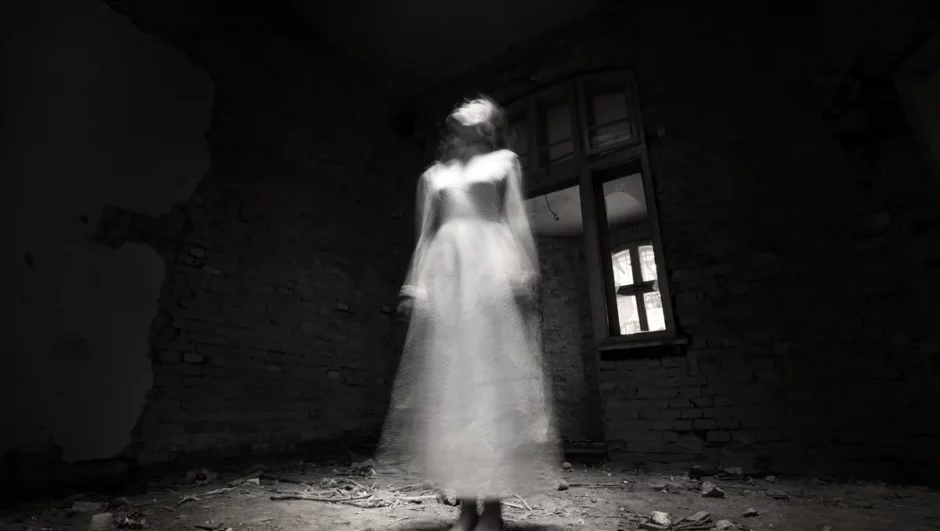
Julia’s, who is dead, experiences what Adam is experiencing. Their points of view merge, as they re-visit scenes from their lives and loves.
Julia encourages Adam to snap out of the bardo, return and live out the remainder of his life.
Julia has brought Adam and Chloe together for a reason.
After Adam unexpectedly snaps back to life, Chloe immediately rejects him, and they go their separate ways – but Julia engineers a way for Chloe to visit the Bardo through a date-drug experience.
As the two women “meet”, they resolve past karma between them.
All three are linked in more ways than one.
As the audience, we experience three Bardo journeys – Adam goes part of the way and turns back. Julia takes the entire ride (the movie is told through her eyes, although we do not realize it, until halfway through). Chloe dips into the Bardo, her mind clouded by the drugs, just to meet Julia.
Chloe’s destiny is to be with Adam… so Julia and Adam can be together again. Julia is reborn as their child, Jules.
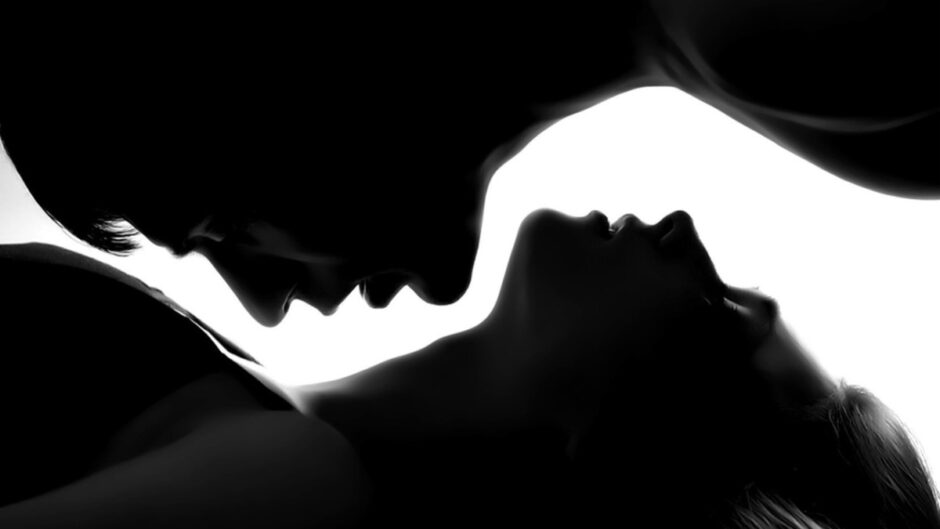
Inspiration
Several films have been an influence – It’s a Wonderful Life, Ghost, Jacobs Ladder, 2001 and Enter the Void, Matrix.
Even people who do not believe in life after death or reincarnation would relate to the story – it is about looking back and seeing the effects of karma – the power of each action, word, and thought.
It is also about being fully in the moment in every point – seeing the magic of life, the world all around us and the loved ones that surround us and are connected to us in more ways that we can imagine.
It’s about how we all are so interconnected and ultimately one and all.
It is really a movie about love and life, rather than death.
I see it as a new version of the classic “It’s a Wonderful Life.”
My hope is for it to be a visceral (beautiful, awe-provoking, mind-blowing and at times terrifying) experience as well as a journey that is moving, emotional, sensual, consciousness expanding and ultimately even “spiritual”.

Core Audience
Understanding death one can lead a richer more meaningful life – especially if there is still much left to experience – so we are aiming at younger audiences.
The central character is a designer of games – the story is about young love, childhood, school, college, relationship to one’s parents.
It is set in the world of tech start-ups, the Electric Daisy Music Carnival, Burning Man Festival, the outdoors – backpacking around the world, action sports and situations that would be fun for a young audience to enjoy as a large screen immersive and VR experience.
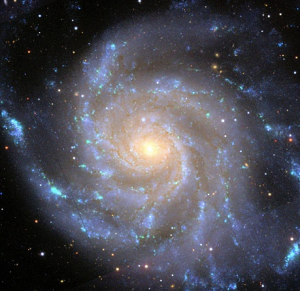
Budget
Coming from the independent world, I see this as a film that could be done on a modest budget – it could mushroom into something bigger by embellishing the effects – but at its core it is an emotional film – about real people – real lives – real places – so the effects should not overpower the experience. As an indie project, it can be more daring, and we can push the envelope further.
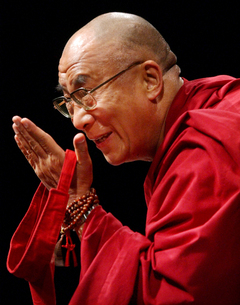
Personal Connection
My mom has vivid memories of her past life, and I have seen the proof – I’m 99% sure that life does not end after death.
My writing partner on the original “Bardo” passed away a few years ago, but the moment I decided to write the new version, the writing process came to me guided as if from beyond – often I found myself writing, without even being aware I was writing – and it was a joyful experience.
I met with a practitioner of past-life regression therapy and interviewed her. One fascinating aspect has been the reversals she has encountered, time and after time – unresolved issues repeated from life to life – men being re-born as women, parents reborn as offspring, the same “cast of family characters” appearing in different configurations. She has seen abusers being reborn as the ones abused, racists as ones discriminated against, killers as their victims.
I tracked down the Dalai Lama and offered the script to him – he took it, smiled and sort of giggled… then just bowed – a perfect “Bardo” moment.
Rafal Zielinski

A music film about a teenager (Mia) who is a singer/musician from a small town in search of her father, a down and out rock-n’ roller.
Fourteen-year-old Mia lives in poverty with her mother, Lacy, in a mobile trailer in Death Valley. She has a pet turtle, Aristotle, and a piranha necklace, which she believes was left behind by her father, Tommy. The frontman for the band The Piranhas, he left a long time ago. Smart, cynical, and tough, Mia endures torment from her classmates and neglect from her drug-addicted mother. Mia is blessed with a talent for the guitar, a soulful voice, and a talent for writing songs, but her mother refuses to let her sing and Mia seems to lack the confidence to ever do anything with her gift – early in the film, she records herself singing only to delete the tracks.

Lacey brings her boyfriend Spencer to the mobile home, who shows an interest in Mia’s music – and in Mia herself. Grabbing her guitar, turtle, and Spencer’s keys, Mia steals his Cadillac and heads to Los Angeles. Her journey is quickly cut short when the car runs out of gas. She walks to a gas station and obtains a jug for gas from the cashier, an irate man who has a piranha tattoo. He recognizes Mia’s necklace and tells Mia that he lived with her father in L.A. at a place called the Paradise Apartments.
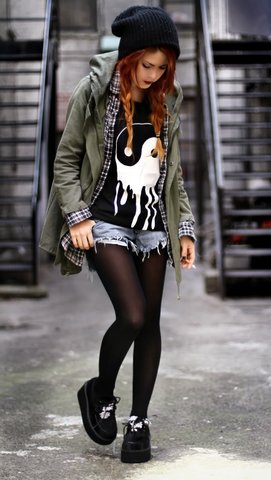
Mia steals gas but at the last minute abandons the car and jumps onto a nearby freight train. She journeys by train to L.A., accompanied by a rotating group of itinerants: vagrants, migrant workers, gangbangers. She reaches L.A., only to find that Paradise Apartments is a hip, posh place where no one has heard of her father. In a record store, she finds an old Piranhas’ CD and, in the liner notes, finds an address for “Paradise Productions”. This takes her to a much more rundown apartment complex, where a neighbor tells her that Tommy has moved. However, he mentions a bar where Tommy can usually be found. At the bar, she’s told that Tommy was spotted walking a dog down by Ocean Park.
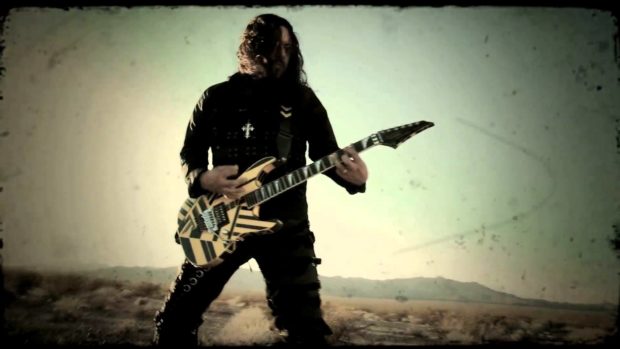
Mia goes to Ocean Park where she eventually finds Tommy walking a dog (she recognizes him because of the piranha tattoo on his arm). She follows him and even picks up the dog droppings which Tommy abandons. Tommy spies her and tells her to get lost. Mia continues to follow him as he takes the dog back to a big beach house. He leaves the dog there (we later learn he’s dog sitting) and Mia finally confronts him. Tommy tells her he isn’t her father and drives off. Mia wanders off and ends up crashing with a bunch of homeless teens, who she dazzles with her music. But when she wakes up, she finds she’s been robbed: the guitar is gone.
Feeling defeated, Mia contemplates returning home. She finds Tommy on Facebook and notices that he’s playing at an Open Mic event that evening. She goes to the bar where she sees Tommy play. He’s terrible, but at least two people think he has potential: Mia herself and a producer named Gregory, who gives Tommy his card. Outside the bar, Mia sings for Tommy, who finally cracks and offers to get her some food. When it turns out he’s broke, Mia takes his guitar and busks for change. When Tommy learns she has nowhere to go, he reluctantly takes her home.
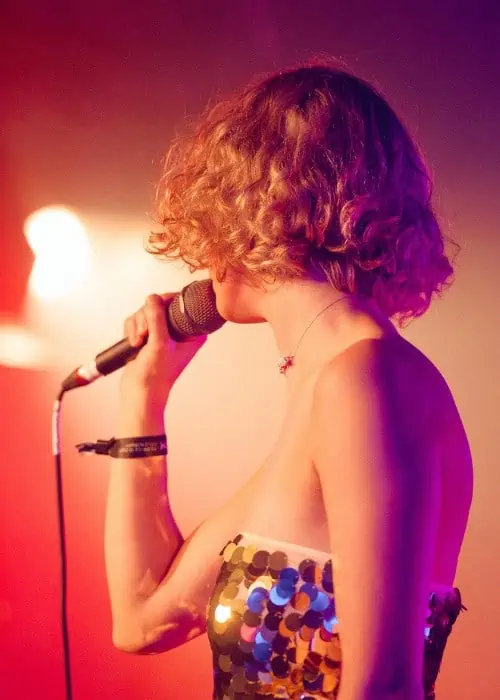
Tommy is living with a burlesque performer named Kate, who is not pleased that he’s come home with a twelve-year-old girl. Mia spends a few days with Tommy and Kate, but it’s clear that Kate is threatened by her and even tries to set Aristotle free. As Mia runs off to find him, Kate gives Tommy an ultimatum: her or the girl. Mia finds the turtle but also sees the homeless kid who stole her guitar. When she tries to get it back, it leads to a fight in which the guitar is destroyed. Mia steals the kid’s skateboard as he runs away. Tommy appears, having decided to help Mia. All this time Lacy has been calling and Mia finally answers the phone. Tommy talks to her and it’s clear Lacy doesn’t know who he is. She gives Mia twenty-four hours to come home – or not to bother returning at all.
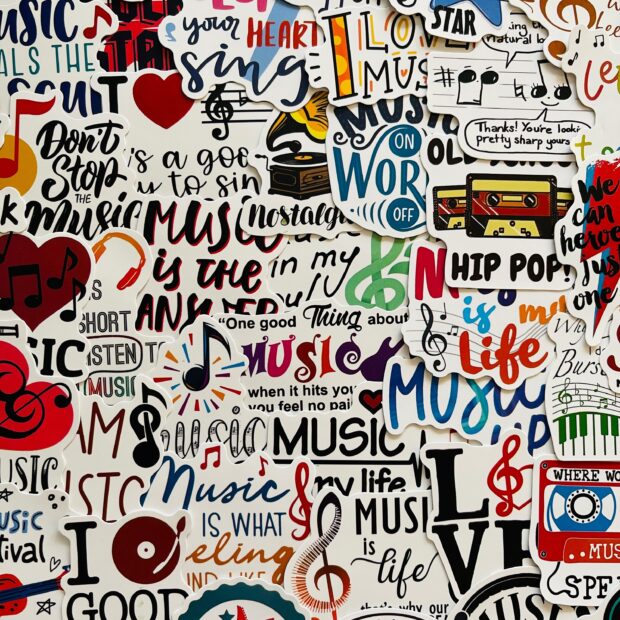
Tommy finds a motel for them to live in and eventually gets her enrolled in school. They continue to bond and Mia encourages him to contact Gregory. Tommy strikes a deal with Gregory and gives him money to book a recording studio, but he soon learns he’s been scammed. Tommy takes his anger out on Mia and repeats that he’s not her father – he and Lacy never even had sex. Mia runs off. Deciding to hop on another train, she takes a picture of herself by the train-yard and sends it to Tommy. She jumps onto the train, only to find Tommy suddenly driving alongside. She leaps off the train and back into the car.
Continue reading

A poetic diary of a fourteen-year old’s girl’s roller-coaster love affair with an 18-year-old boyfriend, fueled by the drug MDMA.
Inspired by the novel “Misconception” by Clelia-Angelina Frith and by true events.
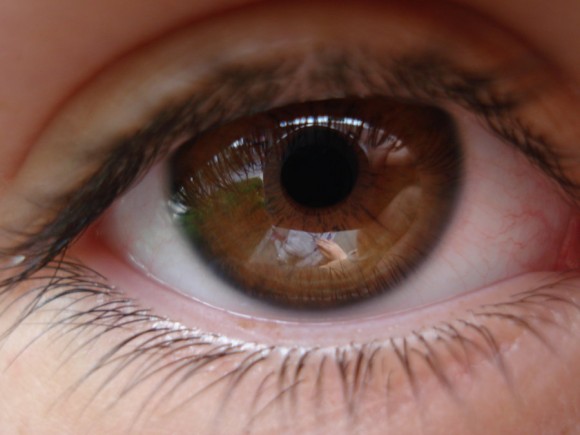
“CUT UP METHOD” – WRITING/FILMAKING STYLE
The cut-up technique (French: découpé) is an aleatory literary technique in which a text is cut up and rearranged to create a new text. The concept can be traced to at least the Dadaists of the 1920s, and the corresponding literary technique (or genre), was invented by author and artist Brion Gysin and the English mathematician Ian Sommerville.
It was popularized in the late 1950s and early 1960s by writer William S. Burroughs, who experimented with the technique cutting up his original text into random fragments and then rearranging them to produce a new text.
The cut-up is closely linked to the lifestyle and philosophy of the Beat Generation defined by Jack Kerouac and Burroughs. It tries to reproduce the visions due to hallucinogens, the spatio-temporal distortions of the thought under toxic influence (phenomenon of déjà-vu in particular).
It has since been used in a wide variety of contexts. Aesthetically, the cut-up is close to pop-art, happenings and post-war surrealism (Henri Michaux for example) and his quest to explore the unconscious.
Philosophically, Burroughs sees in it the culmination of language as a virus and writing as a letting go of consciousness (he proclaims “language is a virus”).
Musique concrète had introduced such techniques as well — cutting, re-arranging and re-editing sounds — much earlier in a musical (as opposed to literary) context.
From at least the early 1970s, David Bowie has used cut-ups to create some of his lyrics.
It is a technique which came to influence Kurt Cobain’s songwriting.
Other musicians working in sample-based music genres, such as hip hop and electronic music, employ a similar technique. DJs may spend hours in record stores looking (“digging”) for LP records featuring obscure or interesting breaks, vocals, and other fragments to meld together in new compositions.

THE NOVEL “MISCONCEPTION”
Written by the 14 year old Clelia Frith, is an intimate series of chapters that are poems chronicling her love for a boyfriend who was 18, a drug dealer, who swept of her feet, got her hooked on the drug ecstasy, started cheating on her, broke her heart, leading to an attempted suicide, then an awakening, efforts to clean up and eventual self-discovery, refusing to allow him back into her life, when he came crying – story of empowerment, and hope that hopefully will inspire and shed some lightness onto the darkness of our world and what teenage girls experience not only in this country but across the world.
The novel has a hypnotic, musical-like effect, almost like lyrics of a song, often using repetition, affirmations, as form of self-enforcement, a chant, a prayer, as if Clelia was trying to make sense of her feelings as a young girl on the cusp of womanhood and will herself into some kind of understanding and illumination.
The script incorporates themes of abuse, teen -pregnancy, addiction, discrimination, race, bullying, suicide, crime, violence, exploitation and trafficking, drawing from several characters from the world of Clelia’s circle growing up in Montreal during the early 2000’s.
The central character, Katherine is a composite character embodying several of these life-journeys.
CHARACTER BREAKDOWNS
KATHERINE
She is the main character. She is a 14-year-old who grew up as an only adopted child in a family with 2 kids. The father was always away on business trips and the mother was always home. They wanted what was best for Katherine, and they made that clear. They didn’t approve of any friends, were always on her case about schoolwork, choices, etc. Katherine thought they were just trying to ruin her life. She didn’t realize that what they were doing was only for her best interest. She rebelled and got into a lot of trouble. Growing up as an only child was lonely, and not having a father around much, she went seeking for those traits in older men. She was also bullied her entire life, which made her depressed. She never felt good enough, or like anyone loved her. She was completely damaged/hated herself, and her life, and was on a relentless path of self-destruction and blamed it on everyone but herself. Her fear was the future. She didn’t know what her hopes and dreams were. She didn’t think she would make it long enough to live her future life.
Her desires are finding new, fun, and thrilling/ rebellious things to do, and new bad people to meet. She has many issues but the biggest one of all was the way she saw/felt about herself. Once she learned to love herself, she changed her mind, heart, self and way of life. She finally had the unconditional self-love that she deserved.
She is hypersensitive and has a deep soul, but she hides it well behind an almost expressionless mask and almost imperceptible tiny smirk, a defense mechanism from battle scars of pain and hurt she has experienced thought out her young life. The “ice queen” image often provokes people to throw punches at her – verbal, psychological, even physical to see how far they can go – to get a reaction. This facade often drives Jacob to rage as he tries to dig deeper and twist and carve himself into her tender heart.
Kat is a born writer, and that’s how her mind works.
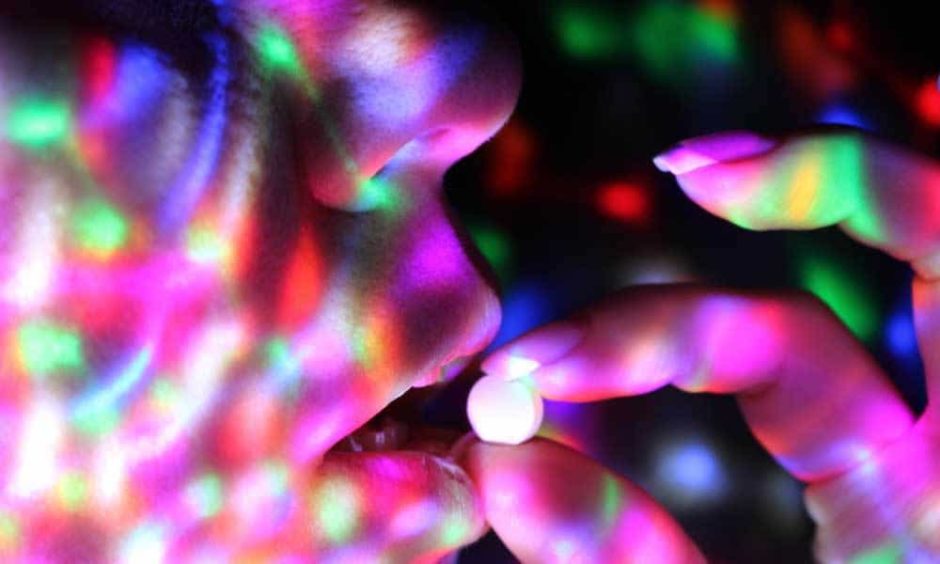
JACOB
He is Katherine’s lover. He is an 18-year-old high school drop out/bad boy, living at home with his father. He sold drugs, he was fun, careless, selfish. He grew up with a dysfunctional family. He watched his mother cheat on his father as a kid, he saw the pain, lies, despair. He watched his father get hurt, repeatedly. He was in the middle of everything, was around for the long, and tough divorce. That destroyed his soul and was what turned him into the horrible person he was. It damaged him deeply. He had no trust in any women, because of course, “they would all turn out to be his mother”. He learned that abuse was okay, because his parents were like that. He learned that lying was the way to go, and to cover up any mistakes… because a lie would hurt the other person less than the truth. His belief system was completely fucked up. He had no hopes, or dreams for his future. He had no ambition. He desired Katherine, because he had full control over her. He fucked with her mind, and made her believe that he loved her, and did everything in his power to never let her leave. That was his deepest secret. The fear of losing her. Not because he loved her, but because he did not want to be alone.
Jacob in the beginning is a bit of a lost soul. He works odd jobs, is very charismatic and interested in music but he never studied it. He hangs out at club events and concerts selling drugs.
Jacob has a huge record collection (his treasure) and has been messing with “Garage Band” on his computer, creating tracks, but he suffers low esteem and thinks his music is shit. He is shy about singing and using his voice. He has no ambition to pursue it as a career – its just a hobby he likes to dabble in. Kat gives him courage and encourages him.
Jacob has a very eclectic taste in music – he loves rap and EDM, which are forms he is experimenting with, but his ultimate idol is David Bowie. He has huge collection of vinyl records from the 60s, 70s, 80s as well as Blues and Jazz – especially Miles Davis.
He is almost religious about his “sacred” collection. Katherine loves to come over and be engrossed into this world of music and sound. She loves when he makes love to her and the music plays loud, especially when it is music he is working on, it’s as if she’s making love to him and his music.
When Katherine gets drunk and high, she accidentally trips over the record player, the needle snaps, scratches a record and breaks another. He attacks her, beats her up and almost wants to kill her.
When she gets mad she starts smashing the records and starts to throw them out of the window. “You love your fuckin’ music more than you love me… you are incapable of real love. You are a psycho! Devil!”
Later they must pawn the whole collection to make the rent.
He is troubled, from a poor working-class family, and single-parent household. Eventually he gets his own pad in an industrial neighborhood, gets a van, and when he gets evicted, he lives out of the van.
He is trying to juggle drugs, music and Kat and can’t handle it all… he crashes and burns…
Kat hears his music (which he is afraid to play to anyone) and thinks it’s amazing and encourages him – she becomes his muse – he eventually will DJ in a talent night at a club, and that gives him courage to start performing.
He also starts posting on SoundCloud and gets fans….
He is an amateur self-taught musician – he is trying to experiment merging rap-music with electronic dance music, incorporating vocals, words, even using bits from Katherine’s diary.

Once he even uses her voice into the mix. She is excited to be part of his creative journey… it makes her feel closer to him and makes her feel he really loves her….
He allows her to come on stage and sing one of her lyrics – they duet – to her it’s the greatest honor.
He likes to play seduction games with her, unable to face reality… his fear of intimacy. It leads to mind-fuck scenarios and violence in the relationship.
Jacob having been hurt in love, afraid to open up, carries the “baggage” of previous relationships with other girlfriends, as well as the loss/betrayal he felt from his mother’s infidelity/the messy divorce. When they are together there are not just two people in a bed, but three, or even whole entourages of the “ghosts” of his ex-lovers… he even talks to them in his drug out state.
Their relationship perhaps at first is more of a cat n’mouse courtship. She challenges him. They don’t come together too quickly and too easily.

THE DRUGS
The drugs were MDMA and SPEED. They made Katherine feel so good. Life was amazing, she was so happy, she felt warm and only saw good in the world, no matter what the circumstances were. She was oblivious to the real world, and towards her true emotions. The drugs covered up anything true, and bad; then made it seem amazing. She was living a lie.
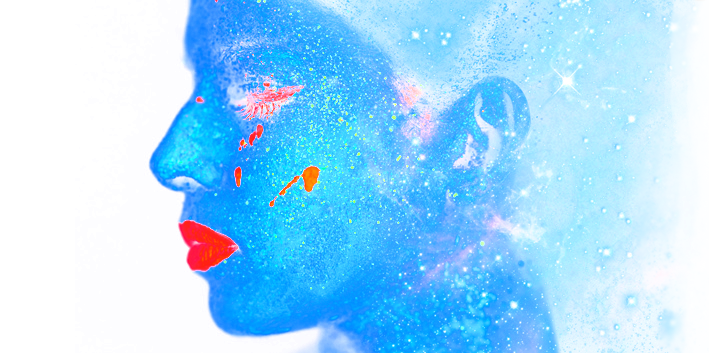
THE NEAR DEATH EXPERIENCE
The more drugs you take, the higher your tolerance is. The high is never the same as the first time; but the first time was the best feeling in the world. As months went by, the high wasn’t as great. The world wasn’t as perfect as it was the last high. Then one day, Katherine took a bit too much, hoping to feel good again. As the high took its peak, about to hit her, it wasn’t a weak high and it wasn’t a strong, pleasant one. It was different. It wasn’t warm and fuzzy. It was cold and a stiff feeling took over her body. Her head started to feel like it was mushy, and she fell to the ground. She couldn’t feel her body. She couldn’t access the thoughts in her mind. She couldn’t feel any emotions. Every time she tried to get up, she would fall back down. And so, she just lay there, letting go. Not caring that it could have been the end for her; and so she closed her eyes and let fate take over.

DIRECTOR’S NOTE
I see the movie as a sort of passionate-psycho, ecstasy-fueled, musical love-journey.
Several years ago, I was thinking of a movie about twisted young-love relationship where the guy messes with the mind, body and soul of an innocent girl who loves him unconditionally.
Some of these previous ideas for scenes would work well in Ecstasy.
Based on play “Calling Aphrodite” by Velina Hasu Houston which received its world premiere recently at International City Theatre, Long Beach, California.
Youth, dreams, and lives destroyed in Hiroshima. The story of two teenage sisters who survived the blast close to ground zero and how it affected their lives.
Houston is a Pinter Review Prize for Drama Silver Medalist for the play which also was a finalist for the American Theatre Critics Association Steinberg New Play Award for its 2007 world premiere. Calling Aphrodite has been embraced by The former Honorable Consul General of Japan of Los Angeles Kazuo Kodama as a “remarkable and appropriate exploration” of the Hiroshima experience. In 2008, Calling Aphrodite was presented at Tokyo Engeki Ensemble (TEE), Tokyo. TEE and Houston continue to collaborate toward an international presentation of the play in Hiroshima.
Continue reading
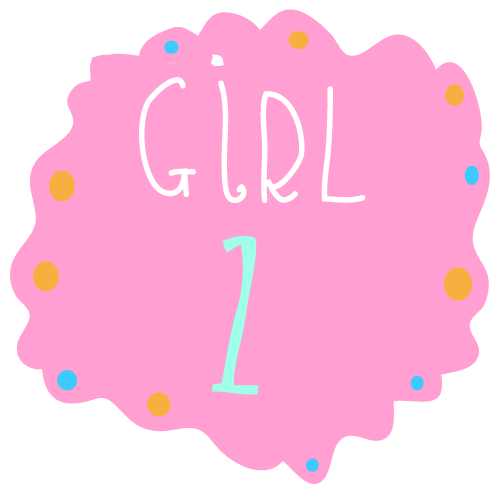
METHODOLOGY
GIRL 5 is a fully AI-created film and music experience — a vibrant, multi-style animated journey into the world of a fictional global pop/rock band. Every character, song, and frame is generated using cutting-edge AI tools, blending visual styles, musical genres, and storytelling techniques from around the world.
The five band members each represent a different continent — North America, Europe, Africa, Asia, and South America — reflecting the diversity and creativity of a connected generation. The film is built entirely around AI-designed characters and environments, brought to life through a mix of visual aesthetics ranging from hand-drawn 2D animation to painterly surrealism, rotoscope, anime, and generative dreamscapes.
The soundtrack — composed and produced through AI collaboration — will include dozens of original pop, rock, dance, and experimental tracks created by AI music engines, human producers, and global songwriters working together in a new kind of creative symbiosis.
Rather than a conventional narrative film, GIRL 5 unfolds as a series of AI-generated music videos interwoven with cinematic story beats, interviews, and documentary-style fragments — blurring the line between fiction and reality. Each song reveals another chapter in the band’s evolution, their rivalries, friendships, and their rebellion against the manufactured pop industry that created them.
Because the entire production is virtual, scenes can shift seamlessly from concert stages to dream worlds — from intimate rehearsal rooms to cosmic music festivals — without the limitations of physical sets or locations.
The project will evolve as a live, iterative process: new songs, visual remixes, and narrative updates will be released throughout production, building an interactive audience following and potentially spinning off into a digital series, virtual concerts, and AI-generated albums once the film premieres.